 Albert Mobilio
Albert Mobilio
A retrospective of the late artist’s paintings showcases an outlook of both turbulence and calm.
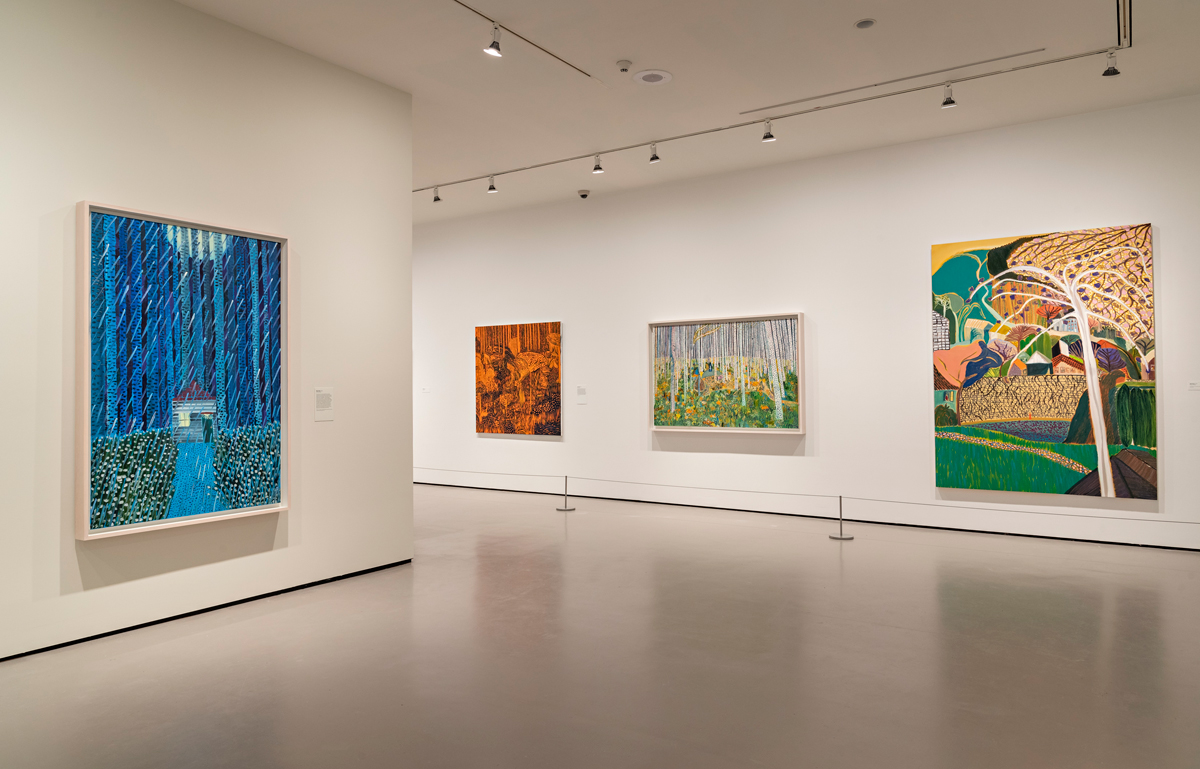
Matthew Wong: The Realm of Appearances, installation view. Photo: Museum of Fine Arts, Boston. © Museum of Fine Arts, Boston.
Matthew Wong: The Realm of Appearances, curated by Vivian Li and organized by the Dallas Museum of Art, Museum of Fine Arts, Boston, 465 Huntington Avenue, Boston, MA, through February 14, 2024
• • •
The sight of footprints in the snow receding into a lurid gloom is sure to raise questions about mortality and fate. When I first saw Matthew Wong’s painting Tracks in the Blue Forest in 2019, at Karma Gallery on the Lower East Side, the image seemed to radiate a chill. I knew the artist had committed suicide just a few months before, and that fact unsurprisingly infiltrated my response to an exhibition that was not only titled Blue—the dominant hue on display—but also featured pieces depicting empty rooms, desolate paths winding through trees, and unpeopled, moonlit landscapes. During the subsequent years, the painter’s reputation has flourished. Works have been acquired by the Metropolitan Museum of Art and the Museum of Modern Art; in 2020, one of his larger canvases sold at auction for nearly $5 million. The retrospective that opened at the Dallas Museum of Art and is now on view at the Museum of Fine Arts, Boston—likely the first of many museum shows to come—takes expansive account of a brief but prolific career. If time has diminished my biographical reading, this exhibition’s generous selection of work—which includes Wong’s earliest experiments with ink on paper, along with a full range of his landscape explorations—further dispels that confining response.
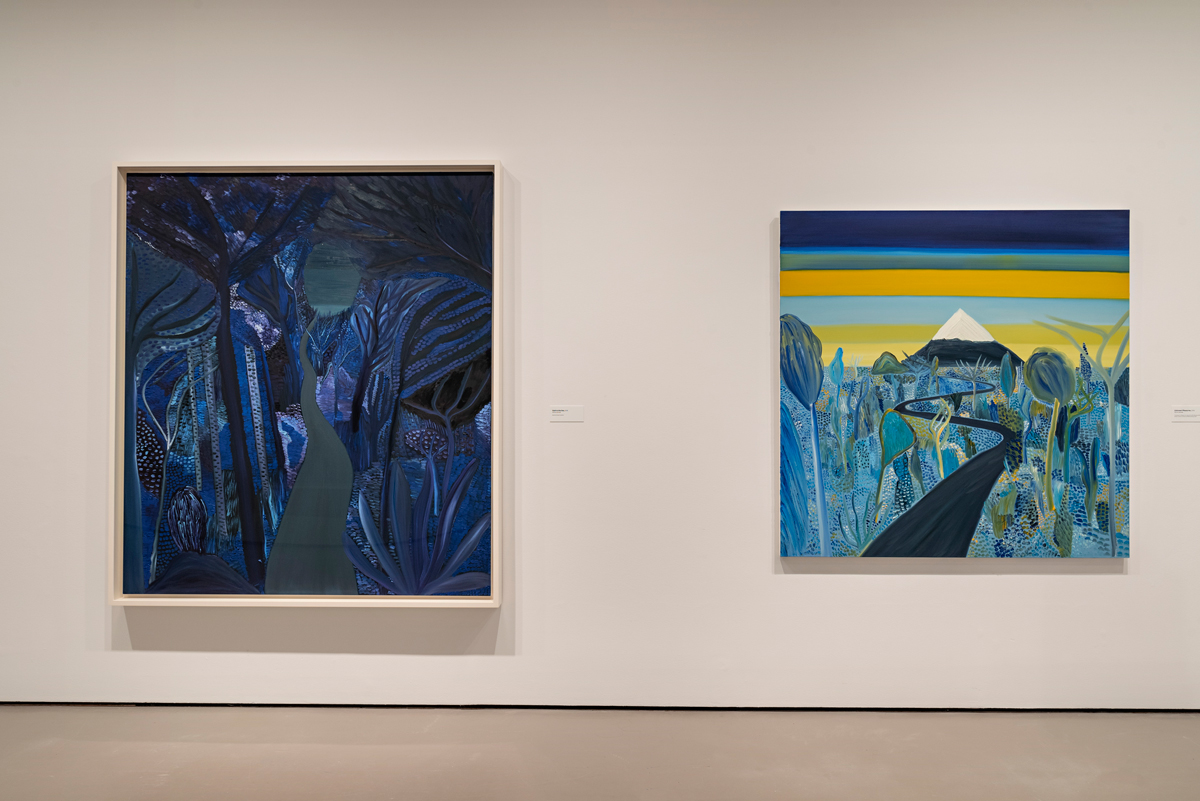
Matthew Wong: The Realm of Appearances, installation view. Photo: Museum of Fine Arts, Boston. © Museum of Fine Arts, Boston.
Born in Toronto, Canada, in 1984, Wong relocated with his family to Hong Kong when he was seven but returned when he was fifteen to seek medical care for his diagnosed Tourette’s and depression. He went back to China, and studied photography at the City University of Hong Kong from 2010 to 2012. Adopting the style of street photographers like Daido Moriyama, he shot images from the hip while walking, leaving much to chance. But the method and its result felt alienating—in his MFA graduation dossier, he described his subjects as “never knowing that they are part of something . . . that is bigger than the individual moment they were recorded on camera.” This dissatisfaction and tacit sense of yearning would inform his later paintings as well as their process of creation. Wong employed an improvisatory technique, alla prima, in which wet paint is applied on wet paint; the method requires rapid mark-making, and the painting is usually completed in a single session. Immediacy and its implied emotional authenticity imbue his canvases, their tactile surfaces, with an aliveness that works in provocative tension with his often melancholic imagery.
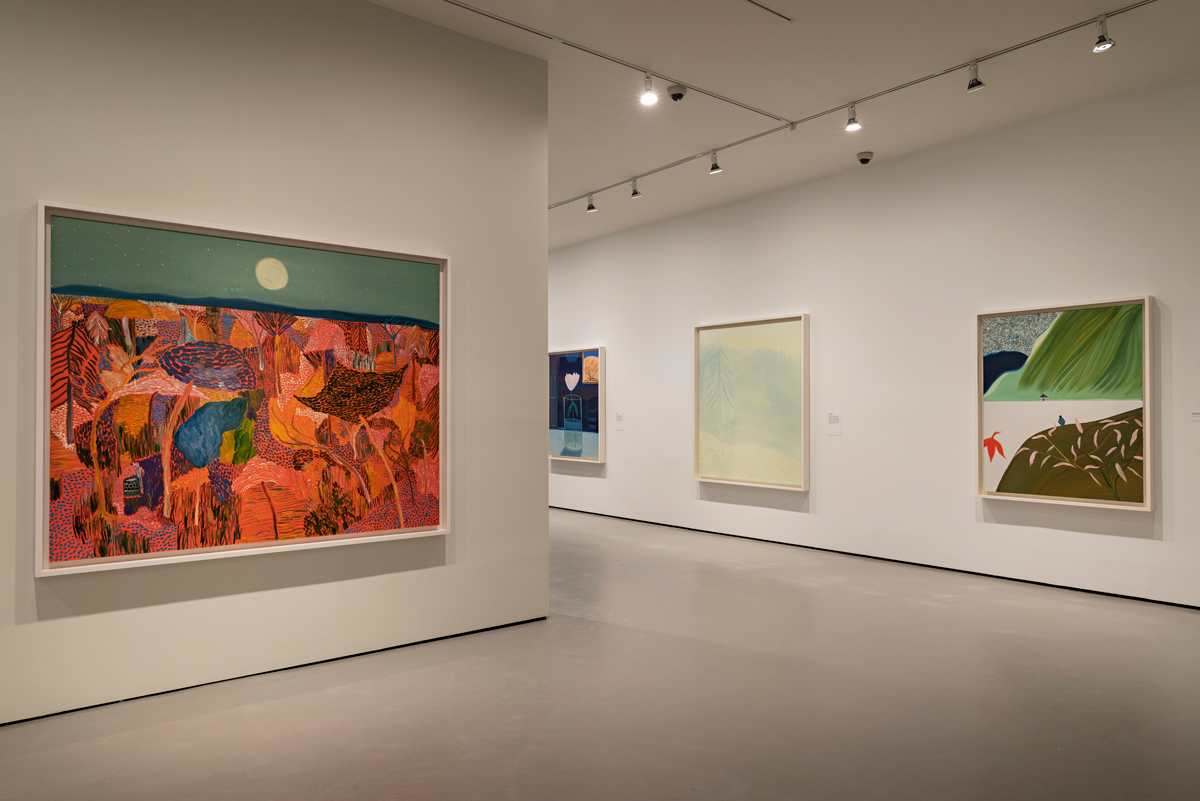
Matthew Wong: The Realm of Appearances, installation view. Photo: Museum of Fine Arts, Boston. © Museum of Fine Arts, Boston.
River at Dusk, one of Wong’s early landscapes, from 2015, might easily be mistaken for abstraction. A dense weave of rising yellowy tendrils all but obscures the horizontal swashes of bluish-green paint that lie behind. In this allover composition, the reeds appear frenzied, even menacing, as they spread across the more than six-foot-wide canvas. It’s not hard to imagine the artist so caught up by sculpting the thickly textured grass that he chose to forsake representational clarity. We peer through this almost impenetrable scrim at the water, its unreachable calm. On a much smaller scale, Contemplating the Iceberg (2016) achieves a similar mood of thwarted desire: a figure stands, head bowed, in front of (or encased inside) a mound of ice. Like many of Wong’s human depictions, this one is blockish, though rich with intricately applied paint, and, except for pink daubs that indicate face, hands, and feet, more gesture than person. Here, again, competing lines generate tension: the ice is riven with dark veins that seem to crackle, as if it were electrified; the supplicant figure is composed of a white-lined grid on a featureless black body. While the object of contemplation pulses with activity, the contemplator appears imprisoned from within.
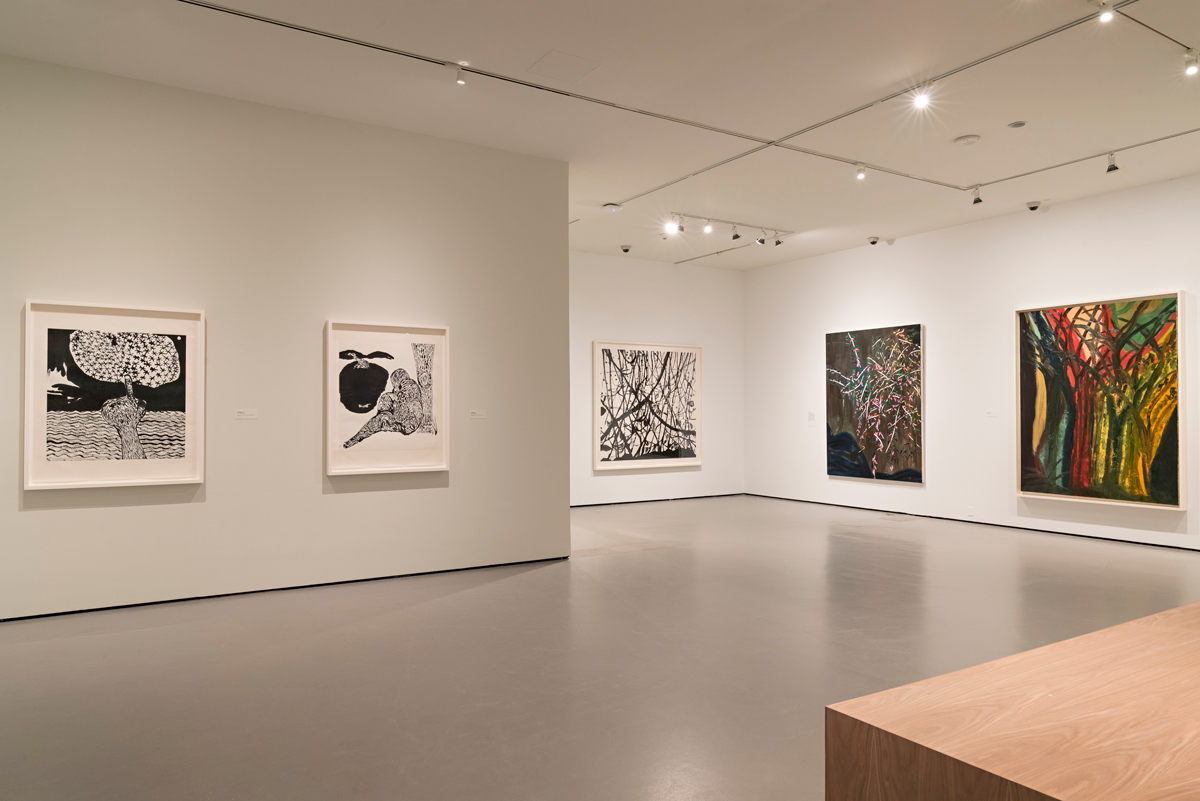
Matthew Wong: The Realm of Appearances, installation view. Photo: Museum of Fine Arts, Boston. © Museum of Fine Arts, Boston.
The exhibition allows us to track in part Wong’s speedy assimilation of the source materials that he assiduously documented on social media, where he posted hundreds of images from a dauntingly diverse range of artists—Henri Matisse, Katherine Bradford, Peter Doig, Lois Dodd among them. The show’s catalog presents Dark Reverie (2019), with its depiction of a sinuous path burrowing into a forest, an image that draws direct inspiration from Van Gogh’s Ravine (1889); for many of his works Wong also took up the Dutch artist’s luxuriant application of paint. Some of his canvases undulate with three-dimensional depth, scored grooves alternating with staccato-like raised dots and slashes. The West (2017) presents another near-monochromatic human figure constructed with furrows of white paint; yet another path stretches before them as they perch on a hillside. The short, fat brushstrokes that create the hill are set in marked contrast to a field and sky stippled with vegetation and a decidedly unrealistic number of stars. Beneath the scene’s ruminative mood, we readily sense the intensity of Wong’s decision-making, the act of paint being layered and pushed.
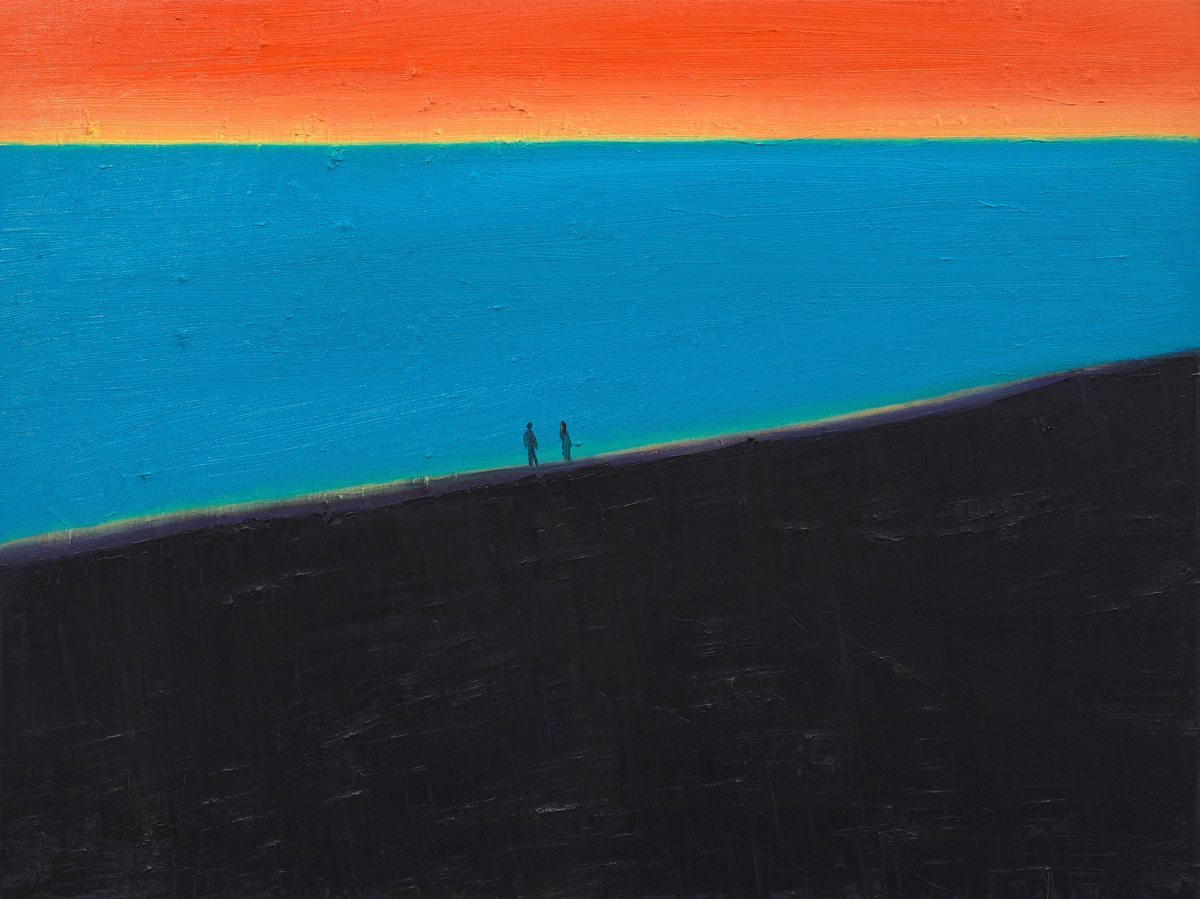
Matthew Wong, A Walk by the Sea, 2019. Oil on canvas. Courtesy Museum of Fine Arts, Boston. © Matthew Wong Foundation / Artists Rights Society.
While in some later landscapes the surfaces are flatter, and the lines demarcating geographic features clearer, the atmosphere of solitary brooding remains. Three smooth bands of unvariegated color portray earth, ocean, and sky in A Walk by the Sea (2019), an image that might signal an association with Rothko if not for the exceedingly tiny figures at the water’s edge. This exact point of view is replicated in a different painting with the same title, although the striations of color are more mixed, the people slightly larger. Wong’s repeated inclusion of such figures—anonymous and typically alone—in domains abundantly populated by sun, sky, trees, and stars can certainly be understood as reflecting a psychological state. But his pictorial world is also one dominated by paths that press through forests and across fields toward uncertain regions. Human presence is obliquely alluded to rather than articulated with directness and detail. We are more palpably evident, Wong may be suggesting, in our journeys forward, in our ongoingness.
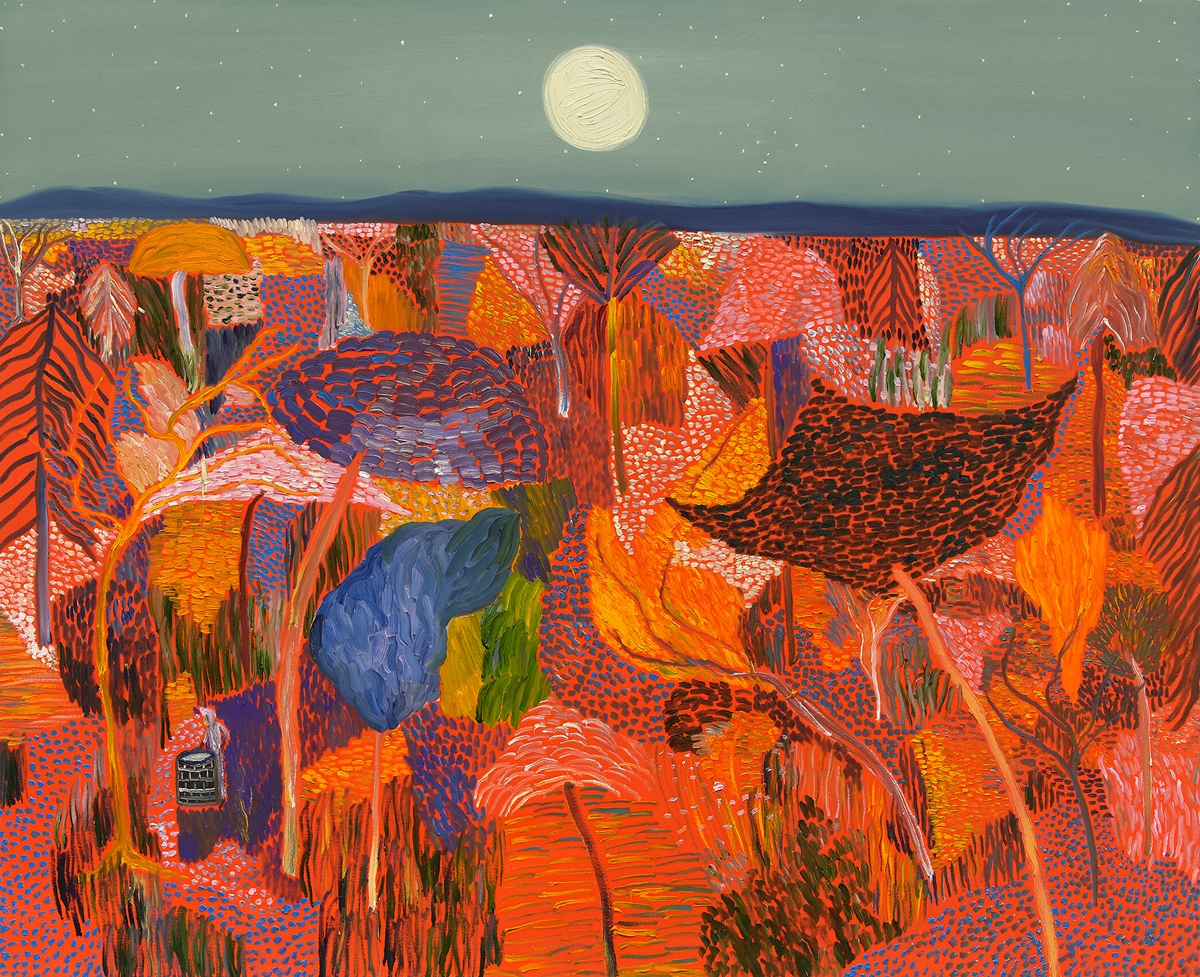
Matthew Wong, The Realm of Appearances, 2018. Oil on canvas. Courtesy Museum of Fine Arts, Boston. © Matthew Wong Foundation / Artists Rights Society.
No doubt such an optimistic interpretation is as overdetermined and dubious as one that fastens on the artist’s depression and suicide. The painting that lends the show its title—The Realm of Appearances (2018)—might prove instructive in this regard: most of the canvas presents a multicolored field, one turbulent with flora; just above that, a full moon sits amid a placid pale-green sky. Wong’s realm of appearances is an ambiguous locale where chaos and serenity can occupy the same frame, neither state any more the case than the other.
Albert Mobilio is the author of four books of poetry: Same Faces (2020), Touch Wood (2011), Me with Animal Towering (2002), and The Geographics (1995). A book of fiction, Games and Stunts, appeared in 2016. He was a MacDowell Fellow in 2015 and awarded an Andy Warhol Arts Writers Grant in 2017. A former editor at Bookforum, he is currently an editor at Hyperallergic and an associate professor of literary studies at Eugene Lang College at the New School.